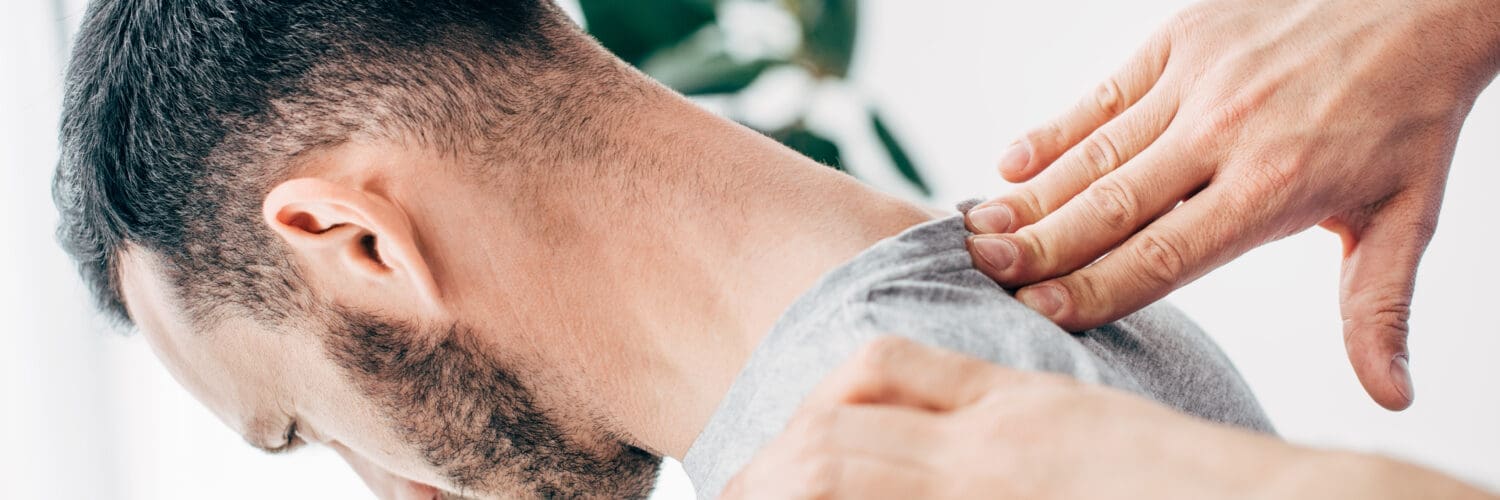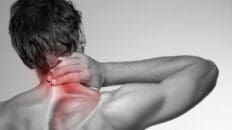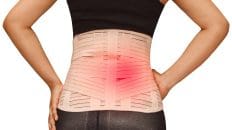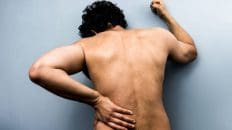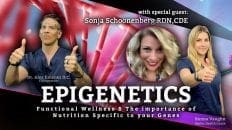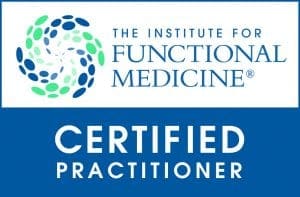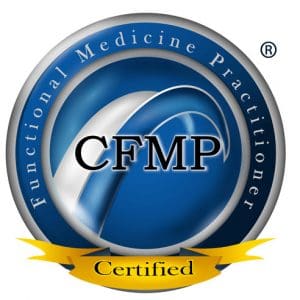Uncover the benefits of the Schroth method with chiropractic care for scoliosis in promoting spinal health and overall well-being.
Table of Contents
Integrative Wellness: Combining Chiropractic Care and the Schroth Method for Scoliosis Management
Scoliosis, a condition where the spine curves sideways in an abnormal “S” or “C” shape, affects approximately 2-3% of the population, with over 7 million people in the United States alone experiencing this spinal deformity (Lin, 2025). It’s like the spine decided to take a scenic detour instead of sticking to the straight and narrow! But this detour can lead to more than just an interesting X-ray; it can cause pain, mobility issues, and even affect your organs if left unchecked. Thankfully, non-surgical approaches like chiropractic care and the Schroth Method offer a dynamic duo to help manage scoliosis, reduce pain, and improve quality of life. In this comprehensive guide, we’ll dive into the world of scoliosis, explore its causes and impact on the musculoskeletal system, and discuss how combining chiropractic care with the Schroth Method—along with insights from Dr. Alexander Jimenez, DC, APRN, FNP-BC—can make a real difference. Additionally, we’ll explore how Dr. Jimenez’s expertise in personal injury cases in El Paso relates to this holistic approach. So, grab a comfy seat (posture matters!), and let’s get started.
Understanding Scoliosis: The Spine’s Unexpected Curveball
Scoliosis isn’t just a single condition; it’s a bit like a plot twist in the story of your spine. Defined as a lateral spinal curvature with a Cobb angle greater than 10 degrees, scoliosis can range from mild to severe, affecting people of all ages, although it often becomes apparent during adolescence (Lin, 2025). The Cobb angle, measured via X-ray, is like the spine’s report card, telling us how much it’s veering off course. While some curves are barely noticeable, others can lead to visible asymmetry, pain, and even breathing difficulties if the curve messes with the rib cage’s day job.
Types of Scoliosis
Scoliosis comes in a few flavors, each with its own origin story:
- Idiopathic Scoliosis: The most common type, especially in adolescents (think teens hitting their growth spurt). It’s as if the spine has decided to go rogue for no clear reason, accounting for approximately 80% of cases (Weinstein et al., 2008).
- Congenital Scoliosis: This happens when the spine forms incorrectly before birth, like a construction crew misreading the blueprints.
- Neuromuscular Scoliosis: Linked to conditions like cerebral palsy or muscular dystrophy, where muscle imbalances pull the spine out of alignment.
- Degenerative Scoliosis: Common in older adults, where wear and tear (think arthritis or disc degeneration) causes the spine to curve over time.
Factors Contributing to Scoliosis
So, what makes the spine decide to take a detour? Several factors can play a role:
- Genetics: If your family tree has a few curvy spines, you’re more likely to have one too. Studies suggest a hereditary component, especially in adolescent idiopathic scoliosis (AIS) (Weinstein et al., 2008).
- Muscle Imbalances: Uneven muscle strength or tone, especially in the back, can cause the spine to tilt sideways, much like a tug-of-war game gone wrong.
- Postural Habits: Slouching like you’re auditioning for a role as a question mark doesn’t cause scoliosis, but poor posture can exacerbate symptoms or make existing curves more noticeable.
- Growth Spurts: Rapid growth during adolescence can amplify spinal curves, particularly in idiopathic scoliosis, as the spine attempts to keep pace with the rest of the body.
- Injuries or Trauma: A car accident or fall can sometimes contribute to spinal misalignment, particularly in adults with degenerative changes (Jimenez, 2017a).
- Neuromuscular Conditions: Diseases affecting muscle control, like spinal muscular atrophy, can lead to scoliosis by disrupting the spine’s support system.
Musculoskeletal and Viscerosomatic Issues
Scoliosis doesn’t just affect the spine; it’s like a pebble in a pond, sending ripples through the musculoskeletal system and beyond. Here’s how:
- Musculoskeletal Impact: The spine’s curvature can lead to uneven muscle loading. On one side, muscles may weaken and atrophy, while on the other, they’re overworked and tight, creating a lopsided tug-of-war (Schreiber et al., 2016). This imbalance can cause back pain, reduced mobility, and even pelvic misalignment, which might make you walk like you’re auditioning for a pirate role with a limp.
- Viscerosomatic Issues: Severe scoliosis can compress internal organs, particularly the lungs and heart, by altering the shape of the thoracic cavity. This can lead to breathing difficulties or, in rare cases, cardiovascular strain (Weinstein et al., 2008). It’s like the spine’s curve is giving your organs an unwanted bear hug.
- Pain and Discomfort: The abnormal curvature can irritate nerves, strain ligaments, and stress joints, leading to chronic pain that might make you feel like your spine is staging a daily protest.
References
- Lin, S. (2025, April 7). Schroth Method for Scoliosis: A Path to Better Spinal Health. Shirley Ryan AbilityLab. https://www.sralab.org
- Weinstein, S. L., Dolan, L. A., Cheng, J. C., Danielsson, A., & Morcuende, J. A. (2008). Adolescent idiopathic scoliosis. The Lancet, 371(9623), 1527-1537. https://pubmed.ncbi.nlm.nih.gov/20301526/
- Schreiber, S., Parent, E. C., Khodayari Moez, E., Hedden, D. M., Hill, D. L., Moreau, M., … Southon, S. C. (2016). Schroth physiotherapeutic scoliosis-specific exercises added to the standard of care lead to better Cobb angle outcomes in adolescents with idiopathic scoliosis – an assessor and statistician blinded randomized controlled trial. PLoS One, 11(12), e0168746. https://pubmed.ncbi.nlm.nih.gov/28033399/
- Jimenez, A. (2017a). History of the Schroth Method for Scoliosis. El Paso Back Clinic. https://elpasobackclinic.com/history-schroth-method-scoliosis/
The Schroth Method: A 3D Approach to Taming the Curve
Enter the Schroth Method, a non-surgical superhero in the fight against scoliosis. Developed by Katharina Schroth in the 1920s, this physical therapy approach is akin to having a personal trainer for your spine, focusing on three-dimensional correction to restore balance to your body (Weiss, 2011). Katharina, who had scoliosis herself, wasn’t a fan of the rigid braces of her time, so she created a system using tailored exercises and breathing techniques to reshape the spine’s alignment. Think of it as yoga with a mission to straighten your spine!
Core Principles of the Schroth Method
The Schroth Method is all about addressing scoliosis in 3D—because your spine isn’t just curving side-to-side; it’s rotating and twisting like a spiral staircase. Here’s what it focuses on:
- Muscular Symmetry: Scoliosis often leaves one side of your back muscles slack while the other side works overtime. Schroth exercises aim to balance this by strengthening the weak side and stretching the tight side (Jimenez, 2017b).
- Rotational Angular Breathing (RAB): This specialized breathing technique is akin to giving your rib cage a pep talk to expand and rotate the spine back into alignment. By breathing into the concave side of the curve, you help reshape the rib cage and surrounding tissues (Lehnert-Schroth, 1991).
- Postural Awareness: Using mirrors and tactile cues, patients learn to “feel” correct posture, making it easier to maintain alignment in daily life. It’s like teaching your body to stand tall without needing a drill sergeant.
How It Works
A Schroth-trained therapist begins with a thorough evaluation, often utilizing X-rays to map the unique curve pattern of your spine. From there, they design a personalized exercise program that might include:
- Stretching and Strengthening: Exercises target specific muscle groups to elongate the spine and reduce rotation. You might hang from a wall bar or use a therapy ball to open up collapsed areas (Jimenez, 2017c).
- Breathing Exercises: RAB involves inhaling into the concave side of the spine to expand it, helping to de-rotate the vertebrae. It’s like inflating a balloon to push your spine into a better position.
- Props and Tools: Wall bars, poles, and therapy balls are often used to assist in achieving proper alignment, making exercises feel like a low-key gymnastics session.
Benefits of the Schroth Method
Studies have shown that the Schroth Method can reduce Cobb angles, improve quality of life, and even decrease the need for surgery in some cases (Schreiber et al., 2016). It’s particularly effective for adolescents with idiopathic scoliosis, where early intervention can slow or stop curve progression (Kuru et al., 2016). Additionally, it empowers patients to take control of their condition, which is akin to giving your spine a high-five for teamwork.
References
- Weiss, H. R. (2011). The method of Katharina Schroth – history, principles, and current development. Scoliosis, 6, 17. https://pubmed.ncbi.nlm.nih.gov/34653079/
- Jimenez, A. (2017b). More About the Schroth Method for Scoliosis. El Paso Back Clinic. https://elpasobackclinic.com/more-about-schroth-method-scoliosis/
- Jimenez, A. (2017c). What is the Schroth Method for Scoliosis? El Paso Back Clinic. https://elpasobackclinic.com/what-is-schroth-method-scoliosis/
- Schreiber, S., Parent, E. C., Khodayari Moez, E., Hedden, D. M., Hill, D. L., Moreau, M., … Southon, S. C. (2016). Schroth physiotherapeutic scoliosis-specific exercises added to the standard of care lead to better Cobb angle outcomes in adolescents with idiopathic scoliosis – an assessor and statistician blinded randomized controlled trial. PLoS One, 11(12), e0168746. https://pubmed.ncbi.nlm.nih.gov/28033399/
- Kuru, T., Yeldan, ?., Dereli, E. E., Özdinçler, A. R., Dikici, F., & Çolak, ?. (2016). The efficacy of three-dimensional Schroth exercises in adolescent idiopathic scoliosis: a randomised controlled clinical trial. Clinical Rehabilitation, 30(2), 181-190. https://pubmed.ncbi.nlm.nih.gov/32603067/
- Lehnert-Schroth, C. (1991). The Effect of an Exercise Program on Vital Capacity and Rib Mobility in Patients with Idiopathic Scoliosis. Spine, 16(1), 83-87.
Chiropractic Care: The Spine’s Best Friend
Chiropractic care serves as a trusted ally to the Schroth Method, providing hands-on adjustments to maintain spinal alignment. Chiropractors, such as Dr. Alexander Jimenez, DC, APRN, FNP-BC, focus on correcting spinal misalignments (subluxations) to reduce pain and enhance function. For scoliosis patients, chiropractic care can complement the Schroth Method by addressing joint restrictions and muscle imbalances that contribute to discomfort.
Clinical Rationale for Chiropractic Care in Scoliosis
Chiropractic adjustments work by restoring proper alignment to the spine and pelvis, thereby alleviating stress on overworked muscles and nerves. Here’s why it’s a game-changer:
- Reducing Subluxations: Scoliosis can cause vertebrae to misalign, irritating nerves and causing pain. Chiropractic adjustments gently realign these vertebrae, reducing nerve pressure and improving mobility (Jimenez, 2017c).
- Improving Joint Mobility: Stiff joints from scoliosis can limit movement. Chiropractic manipulations help loosen the affected areas, making it easier to perform Schroth exercises effectively (Busscher et al., 2010).
- Pain Relief: By correcting misalignments and reducing muscle tension, chiropractic care can alleviate chronic back pain, a common complaint associated with scoliosis (Negrini et al., 2018).
- Enhancing Schroth Outcomes: Adjustments prepare the spine for Schroth exercises by improving flexibility and alignment, allowing patients to achieve better results from their tailored workouts.
Combining Chiropractic with Schroth
When chiropractic care and the Schroth Method team up, it’s like Batman and Robin fighting spinal crime. Chiropractic adjustments create a more mobile and aligned spine, making it easier for patients to perform Schroth exercises correctly. Meanwhile, the Schroth Method’s focus on muscle symmetry and breathing reinforces the adjustments, helping maintain long-term spinal stability. Studies suggest that combining physiotherapy scoliosis-specific exercises (PSSE), such as Schroth, with manual therapies, like chiropractic care, can lead to better Cobb angle outcomes and improved quality of life (Schreiber et al., 2016).
References
- Jimenez, A. (2017c). What is the Schroth Method for Scoliosis? El Paso Back Clinic. https://elpasobackclinic.com/what-is-schroth-method-scoliosis/
- Busscher, I., van Dieën, J. H., Attewell, R., & Wapstra, F. H. (2010). Measurement of intervertebral motion in scoliosis: a review of methods and clinical implications. Spine, 35(8), 827-833. https://pubmed.ncbi.nlm.nih.gov/20301526/
- Negrini, S., Donzelli, S., Aulisa, A. G., Czaprowski, D., Schreiber, S., de Mauroy, J. C., … Lebel, A. (2018). 2016 SOSORT guidelines: Orthopaedic and rehabilitation treatment of idiopathic scoliosis during growth. Scoliosis and Spinal Disorders, 13, 3. https://pubmed.ncbi.nlm.nih.gov/29144110/
- Schreiber, S., Parent, E. C., Khodayari Moez, E., Hedden, D. M., Hill, D. L., Moreau, M., … Southon, S. C. (2016). Schroth physiotherapeutic scoliosis-specific exercises added to the standard of care lead to better Cobb angle outcomes in adolescents with idiopathic scoliosis – an assessor and statistician blinded randomized controlled trial. PLoS One, 11(12), e0168746. https://pubmed.ncbi.nlm.nih.gov/28033399/
Dr. Alexander Jimenez: A Leader in Scoliosis and Personal Injury Care
In El Paso, Texas, Dr. Alexander Jimenez stands out as a beacon of hope for those dealing with scoliosis and personal injury. As a board-certified chiropractor and Family Nurse Practitioner, Dr. Jimenez brings a unique blend of expertise to the table, combining chiropractic care, functional medicine, and advanced diagnostic techniques to help patients manage scoliosis and recover from injuries.
Scoliosis Management with Dr. Jimenez
Dr. Jimenez takes a holistic approach to scoliosis, integrating chiropractic adjustments with the Schroth Method and other non-surgical therapies. His clinical insights, shared through platforms such as HealthVoice360 (https://healthvoice360.com/) and LinkedIn (https://www.linkedin.com/in/dralexjimenez/), emphasize the importance of personalized care. He starts with a comprehensive evaluation, often using X-rays and inclinometers to assess the Cobb angle and curve pattern. From there, he designs a treatment plan that might include:
- Chiropractic Adjustments: To correct subluxations and improve spinal mobility, setting the stage for effective Schroth exercises.
- Schroth Method Integration: Working with Schroth-certified therapists to teach patients tailored exercises and breathing techniques.
- Lifestyle Modifications: Dr. Jimenez advises making small changes, such as ergonomic adjustments at work or school, to support spinal health (Jimenez, 2017d).
Personal Injury Expertise
Dr. Jimenez is also a distinguished practitioner for personal injury cases in El Paso, particularly for injuries like whiplash or lower back pain from car accidents, which can exacerbate scoliosis or cause similar spinal issues (Jimenez, 2017a). His approach includes:
- Advanced Imaging: Using X-rays, MRIs, or CT scans to pinpoint injury-related misalignments or soft tissue damage.
- Diagnostic Evaluations: Assessing range of motion, muscle strength, and neurological function to create a clear picture of the injury’s impact.
- Dual-Scope Procedures: Combining chiropractic adjustments with physical therapy to address both structural and functional issues.
- Legal Liaison: Dr. Jimenez serves as a bridge between medical care and legal documentation, ensuring the accuracy of medical reports for personal injury claims, which is crucial for victims seeking compensation.
His ability to connect clinical findings with legal needs makes him a trusted partner for patients navigating the aftermath of accidents. Whether it’s a fender bender or a more severe collision, Dr. Jimenez’s expertise ensures that patients receive the care and documentation they need to recover and move forward.
References
- Jimenez, A. (2017a). History of the Schroth Method for Scoliosis. El Paso Back Clinic. https://elpasobackclinic.com/history-schroth-method-scoliosis/
- Jimenez, A. (2017d). Empowering the Schroth Method for Scoliosis. El Paso Back Clinic. https://elpasobackclinic.com/empowering-schroth-method-scoliosis/
- HealthVoice360. (n.d.). Dr. Alexander Jimenez. https://healthvoice360.com/
- LinkedIn. (n.d.). Dr. Alexander Jimenez, DC, APRN, FNP-BC. https://www.linkedin.com/in/dralexjimenez/
Non-Surgical Treatments for Scoliosis: A Team Effort
Beyond chiropractic care and the Schroth Method, other non-surgical treatments can contribute to scoliosis management. These approaches work together to reduce overlapping risk profiles, like pain, curve progression, and reduced mobility:
- Bracing: For adolescents with moderate curves (20-40 degrees), bracing can slow the progression of the curve until skeletal maturity is reached. It’s like giving the spine a gentle hug to keep it in line (Negrini et al., 2018).
- Physical Therapy: General physical therapy can complement Schroth by focusing on core strength and flexibility, helping stabilize the spine (Romano et al., 2012).
- Massage Therapy: This can relieve muscle tension and improve circulation, easing pain caused by scoliosis-related imbalances.
- Functional Medicine: Addressing nutritional deficiencies or inflammation can support overall musculoskeletal health, as Dr. Jimenez often highlights in his functional medicine approach (HealthVoice360, n.d.).
These treatments, when combined with chiropractic care and Schroth, create a comprehensive plan to tackle scoliosis from multiple angles, reducing pain and improving function without the need for surgery.
References
- Negrini, S., Donzelli, S., Aulisa, A. G., Czaprowski, D., Schreiber, S., de Mauroy, J. C., … Lebel, A. (2018). 2016 SOSORT guidelines: Orthopaedic and rehabilitation treatment of idiopathic scoliosis during growth. Scoliosis and Spinal Disorders, 13, 3. https://pubmed.ncbi.nlm.nih.gov/29144110/
- Romano, M., Minozzi, S., Zaina, F., Chockalingam, N., Kotwicki, T., Hennes, A., … Negrini, S. (2012). Exercises for adolescent idiopathic scoliosis. Cochrane Database of Systematic Reviews, 8, CD007837. https://pubmed.ncbi.nlm.nih.gov/38776317/
- HealthVoice360. (n.d.). Dr. Alexander Jimenez. https://healthvoice360.com/
Unlocking Vitality- Video
Small Changes for Big Impact: Lifestyle Tips from Dr. Jimenez
Dr. Jimenez’s clinical insights emphasize that small, consistent changes in daily routines can significantly support scoliosis management. Here are some practical tips:
- Ergonomic Adjustments: Use supportive chairs or standing desks to maintain proper posture. It’s like giving your spine a VIP seat for the day (Jimenez, 2017d).
- Exercise Regularly: Incorporate low-impact activities, such as swimming or yoga, to keep your muscles flexible and strong without stressing your spine.
- Mind Your Posture: Practice standing and sitting with shoulders back and head aligned, as if you’re balancing a book on your head (but without the actual book, unless you’re feeling extra fancy).
- Nutrition: A diet rich in anti-inflammatory foods (think leafy greens and omega-3s) can reduce pain and support muscle health, as Dr. Jimenez advocates in his functional medicine approach (HealthVoice360, n.d.).
- Stay Active: Avoid prolonged periods of sitting, as this can exacerbate spinal strain. Set a timer to stand and stretch every 30 minutes—it’s like a mini-vacation for your spine.
These changes, combined with professional care, can help patients manage scoliosis symptoms and improve their overall quality of life.
References
- Jimenez, A. (2017d). Empowering the Schroth Method for Scoliosis. El Paso Back Clinic. https://elpasobackclinic.com/empowering-schroth-method-scoliosis/
- HealthVoice360. (n.d.). Dr. Alexander Jimenez. https://healthvoice360.com/
The Bigger Picture: Why Non-Surgical Care Matters
Scoliosis isn’t just a physical condition; it can take an emotional toll, especially for teens who might feel self-conscious about their appearance or adults dealing with chronic pain. Non-surgical treatments like the Schroth Method and chiropractic care offer a proactive, empowering approach. They give patients tools to manage their condition, reduce pain, and potentially avoid invasive procedures. In El Paso, practitioners like Dr. Jimenez are leading the charge, combining clinical expertise with a patient-centered approach to make a real difference.
Personal Injury and Scoliosis: A Special Note
For those in El Paso dealing with scoliosis exacerbated by personal injuries (like car accidents), Dr. Jimenez’s dual expertise in chiropractic and personal injury care is invaluable. His use of advanced imaging and diagnostic evaluations ensures precise treatment plans, while his ability to provide detailed medical documentation supports legal claims, helping victims secure the care and compensation they deserve (Jimenez, 2017a).
References
- Jimenez, A. (2017a). History of the Schroth Method for Scoliosis. El Paso Back Clinic. https://elpasobackclinic.com/history-schroth-method-scoliosis/
Conclusion
Scoliosis is a complex condition that requires a thoughtful, multifaceted approach to manage effectively. By combining the Schroth Method’s tailored exercises and breathing techniques with chiropractic care’s focus on spinal alignment, patients can achieve significant improvements in pain, posture, and quality of life. Dr. Alexander Jimenez’s expertise in El Paso, Texas, underscores the effectiveness of integrative care, which combines chiropractic adjustments, functional medicine, and personalized guidance to empower patients. His work in personal injury cases further underscores his commitment to holistic healing, ensuring that victims receive both medical and legal support. While this blog has sprinkled in a bit of humor to keep things light, the importance of seeking professional care for scoliosis cannot be overstated. Disclaimer: This information is for educational purposes only and is not a substitute for professional medical advice. Always consult a qualified healthcare provider, such as a chiropractor or Schroth-certified therapist, to develop a treatment plan tailored to your needs. For more information or to schedule a consultation with Dr. Jimenez, visit https://elpasobackclinic.com/ or contact his office at 915-850-0900.
General Disclaimer
Professional Scope of Practice *
The information herein on "The Schroth Method & Chiropractic Care Solutions for Scoliosis" is not intended to replace a one-on-one relationship with a qualified health care professional or licensed physician and is not medical advice. We encourage you to make healthcare decisions based on your research and partnership with a qualified healthcare professional.
Blog Information & Scope Discussions
Welcome to El Paso's Premier Wellness and Injury Care Clinic & Wellness Blog, where Dr. Alex Jimenez, DC, FNP-C, a Multi-State board-certified Family Practice Nurse Practitioner (FNP-BC) and Chiropractor (DC), presents insights on how our multidisciplinary team is dedicated to holistic healing and personalized care. Our practice aligns with evidence-based treatment protocols inspired by integrative medicine principles, similar to those found on this site and our family practice-based chiromed.com site, focusing on restoring health naturally for patients of all ages.
Our areas of multidisciplinary practice include Wellness & Nutrition, Chronic Pain, Personal Injury, Auto Accident Care, Work Injuries, Back Injury, Low Back Pain, Neck Pain, Migraine Headaches, Sports Injuries, Severe Sciatica, Scoliosis, Complex Herniated Discs, Fibromyalgia, Chronic Pain, Complex Injuries, Stress Management, Functional Medicine Treatments, and in-scope care protocols.
Our information scope is multidisciplinary, focusing on musculoskeletal and physical medicine, wellness, contributing etiological viscerosomatic disturbances within clinical presentations, associated somato-visceral reflex clinical dynamics, subluxation complexes, sensitive health issues, and functional medicine articles, topics, and discussions.
We provide and present clinical collaboration with specialists from various disciplines. Each specialist is governed by their professional scope of practice and their jurisdiction of licensure. We use functional health & wellness protocols to treat and support care for musculoskeletal injuries or disorders.
Our videos, posts, topics, and insights address clinical matters and issues that are directly or indirectly related to our clinical scope of practice.
Our office has made a reasonable effort to provide supportive citations and has identified relevant research studies that support our posts. We provide copies of supporting research studies upon request to regulatory boards and the public.
We understand that we cover matters that require an additional explanation of how they may assist in a particular care plan or treatment protocol; therefore, to discuss the subject matter above further, please feel free to ask Dr. Alex Jimenez, DC, APRN, FNP-BC, or contact us at 915-850-0900.
We are here to help you and your family.
Blessings
Dr. Alex Jimenez DC, MSACP, APRN, FNP-BC*, CCST, IFMCP, CFMP, ATN
email: coach@elpasofunctionalmedicine.com
Multidisciplinary Licensing & Board Certifications:
Licensed as a Doctor of Chiropractic (DC) in Texas & New Mexico*
Texas DC License #: TX5807, Verified: TX5807
New Mexico DC License #: NM-DC2182, Verified: NM-DC2182
Multi-State Advanced Practice Registered Nurse (APRN*) in Texas & Multistate
Multistate Compact RN License by Endorsement (42 States)
Texas APRN License #: 1191402, Verified: 1191402 *
Florida APRN License #: 11043890, Verified: APRN11043890 *
* Prescriptive Authority Authorized
ANCC FNP-BC: Board Certified Nurse Practitioner*
Compact Status: Multi-State License: Authorized to Practice in 40 States*
Graduate with Honors: ICHS: MSN-FNP (Family Nurse Practitioner Program)
Degree Granted. Master's in Family Practice MSN Diploma (Cum Laude)
Dr. Alex Jimenez, DC, APRN, FNP-BC*, CFMP, IFMCP, ATN, CCST
My Digital Business Card
RN: Registered Nurse
APRNP: Advanced Practice Registered Nurse
FNP: Family Practice Specialization
DC: Doctor of Chiropractic
CFMP: Certified Functional Medicine Provider
MSN-FNP: Master of Science in Family Practice Medicine
MSACP: Master of Science in Advanced Clinical Practice
IFMCP: Institute of Functional Medicine
CCST: Certified Chiropractic Spinal Trauma
ATN: Advanced Translational Neutrogenomics






